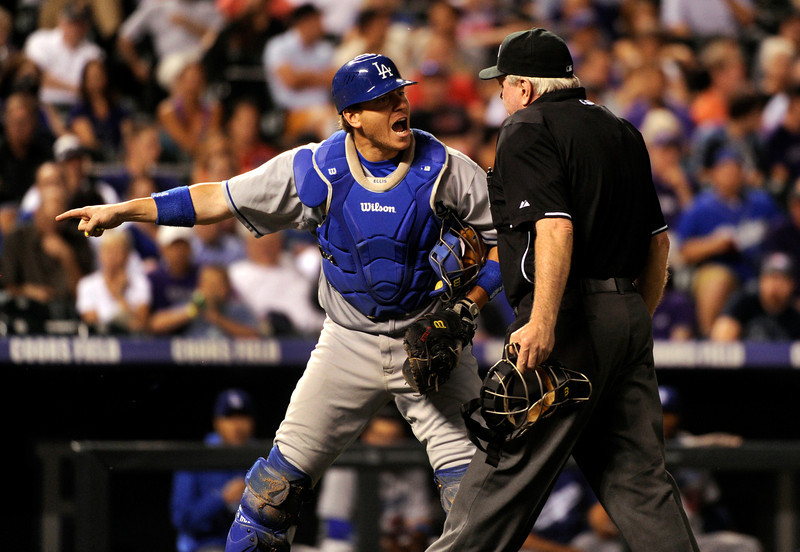
Dodgers catcher A.J. Ellis demonstrates how high some strikes are being called nowadays. (Karl Gehring/The Denver Post)
If the strike zone were to expand by, say, 40 square inches in the next six years, it would probably give pitchers a significant advantage over hitters. Right? Batting averages, on-base percentages and slugging percentages might drop. Strikeouts would rise. Casual baseball fans would long for the Steroid Era.
It so happens that, in the last six years, the strike zone has expanded by 40 square inches. Thirty-nine to be exact, according to TheHardballTimes.com, in an article titled “The Strike Zone is Out of Control.”
Certainly that helps explain why the average major-league team struck out 1,248 times this season, compared to 1,096 in 2008.
The Dodgers were among the poster boys for the expanded strike zone (no offense to the Gameday Guy). Their pitchers led the National League in strikeouts this season with 1,373. So far as we can tell, only two NL teams have ever struck out more batters in a single season.
Expanding the strike zone forces hitters to contend with pitches over a larger portion of the plate, which tends to take a hitter out of his comfort zone. That should result in weaker contact, fewer home runs, more outs, and yes — more strikeouts.
For those who lived through the early portion of the “Steroid Era,” a common refrain at the time was that the strike zone (and ballparks) were shrinking at the same time the players were getting larger. Besides the drug policy, what changed?
It so happens that 2008 was the first year that Pitch F/X technology was introduced. Pitch F/X forces umpires to see their strike zone compared to the rulebook-defined zone, pitch for pitch, for every ball and strike called during the season. It could simply be that, six years later, umpires have made a noticeable correction for a longstanding trend in the opposite direction.
The current trend could be a finite correction back to the mean.
For now, it’s something to keep in mind the next time your friend tells you that baseball’s performance-enhancing drug policy is the sole reason for lower power numbers in today’s game. The answer usually isn’t that simple.
